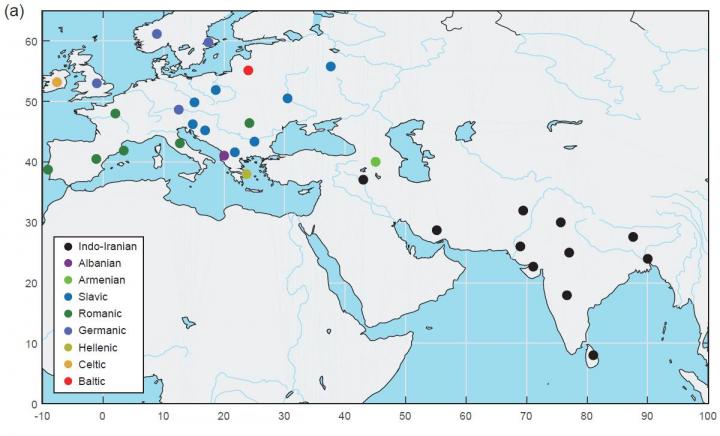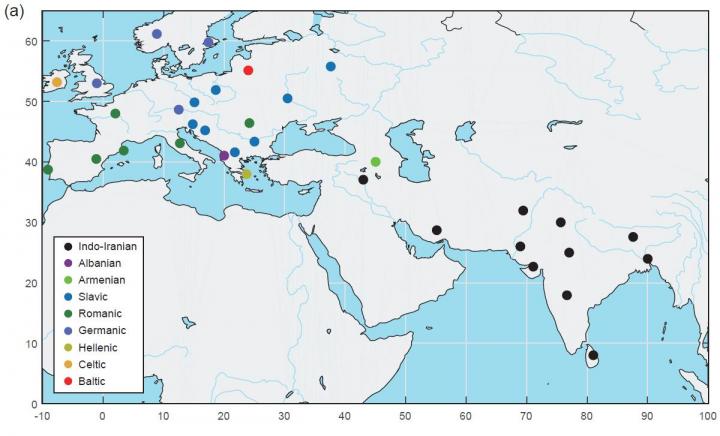
Credit: ©Science China Press
Mother or father who has a stronger influence on their children's language has puzzled linguists for many years? Mother tongue hypothesis refers to that the language usage follows matrilineal inheritance. Father tongue hypothesis refers to that paternal lines dominate the local language in an already-populated region, which was proposed based on other genetic and anthropological researches.
The team of researchers, led by population geneticist Li Jin, found that in Indo-European populations, the paternal lineages (Y-chromosome) were correlated to the vocabulary (lexicon) of their languages, meanwhile the maternal lineages were associated with their pronunciations (phoneme). For the study, the authors explored the genetic-linguistic relationship of 34 populations speaking different Indo-European (IE) languages. They assembled compositions of the Y-chromosomal and mtDNA haplogroups or paragroups from these IE populations, which reflect paternal and maternal lines, respectively. These haplogroups or paragroups were defined using stable mutations so that they are all formed already in the Paleolithic Age (over 10,000 year). For comparing the IE languages, the basic word list and phonemic inventory they used reflect the vocabulary system and sound system in a language, respectively.
The team found that that the change in lexicon reflects the differences in paternal lines, while phonemic dissimilarity reflects the differences in maternal lines, after removing the effect of geography. Such observations of unbalanced correlations were consistent with different size of lexical dataset, and were successfully evaluated for their robustness based on alternative statistical approaches.
Dr. Menghan Zhang, the first author of this paper indicated that the unbalanced correlation between genetics and linguistics can be explained by male-dominant population contact, and the strategy of language learning by local females which is similar to the second language acquisition.
Referring to the study, authors admitted that this study was on the basis of correlation analysis, but not the causal inference. However, they also proposed one hypothetical scenario of language evolution that father could affect the usage of words, while mother could pass down her pronunciations.
###
The research was published in the National Science Review.
Title: Reconciling the father tongue and mother tongue hypotheses in Indo-European populations
Authors: Menghan Zhang, Hong-Xiang Zheng, Shi Yan, Li Jin
https://doi.org/10.1093/nsr/nwy083
Media Contact
Menghan Zhang
[email protected]
http://www.scichina.com/
Related Journal Article
http://dx.doi.org/10.1093/nsr/nwy083





